Description of streptocarpus, their types, planting and care features
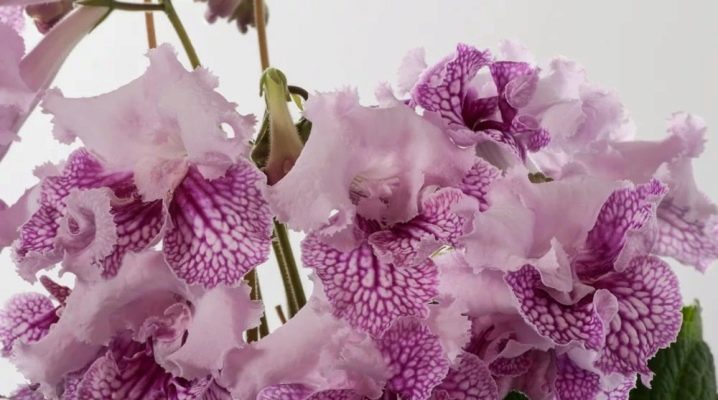
Gardeners highly value plants from the Gesneriev family, famous for their diversity. Among them, streptocarpus stands out in popularity. What is it and how to handle it, let's try to figure it out.


Description
The name streptocarpus sounds beautiful and even mysterious. But the literal translation from Latin is much more prosaic - "twisted box". This is the impression that is created when looking at ripe seeds. The plant comes from the Cape Province of South Africa. Therefore, it was awarded another epithet - Cape primrose (although it has nothing to do with this primrose).
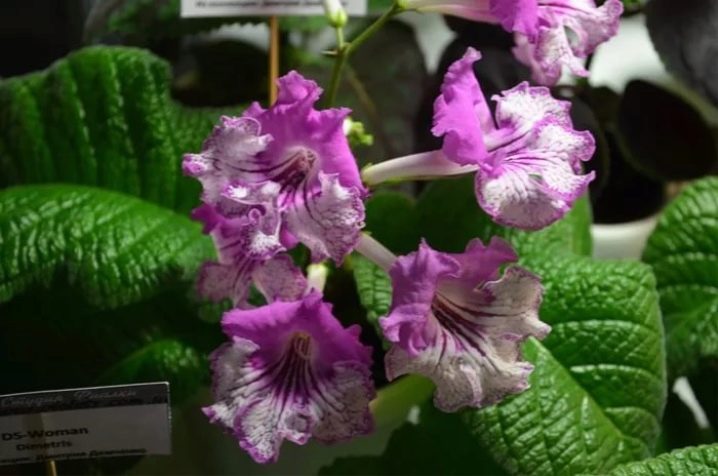
Like many other ornamental plants, streptocarpus is not one particular species, but an extensive group. Now the botanical classification includes almost 140 species in this group. To grow such plants at home or in the garden, you need to know that they come from the humid tropical regions of Asia and Africa. It is customary to divide them into three subgroups:
- having only one stem, covered with leaves (these species are relatively few);
- stemless varieties, in which a leafy rosette is formed;
- streptocarpuses with a single hairy leaf and highly developed peduncles.
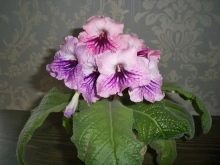
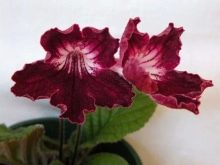
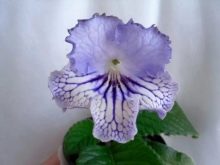
The breeders did a very good job. Thousands of streptocarp varieties are already known. In particular:
- two-tone varieties with contrasting colors of the corolla and throat;
- plants with fancy colors;
- varieties with original textured petals;
- double and semi-double flowers;
- variegated plants;
- miniature and semi-dwarf varieties.
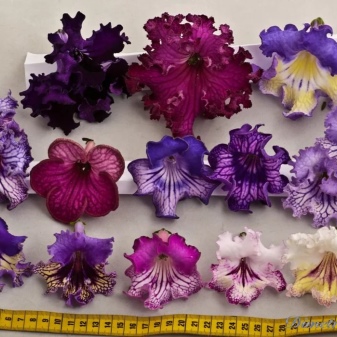
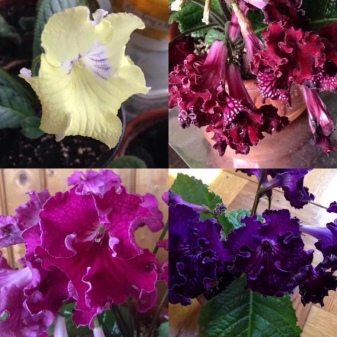
There is no doubt that growing streptocarp will become more and more popular. Moreover, they are already systematically moving into the category of collection plants (just as it happened earlier with the Usambar violets). But if "violets" are already fizzling out (so many varieties have been bred that it is difficult to create a new one), then breeders are still working very actively on streptocarpus. Saintpaulias are not mentioned by chance - "wrinkled boxes" generally require approximately the same conditions of detention. But there is one very significant difference: in the wild, streptocarpus, unlike the "violet", does not exhibit any decorative properties.
Only varieties derived from it look beautiful. The stem is not formed in the species. Oblong leaves are covered with soft nap. The size of the foliage is determined by the variety and type of streptocarpus, sometimes up to 0.3 m. The total number of leaves is also highly dependent on the specific plant type.
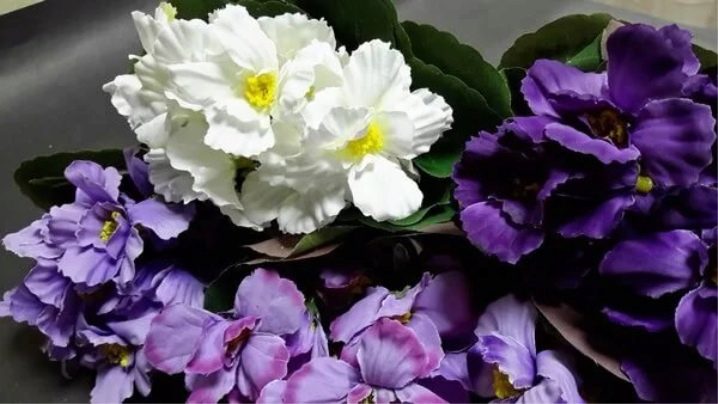
In any case, the leaves are grouped into large rosettes. Almost any leaf sinus can form an oblong peduncle. There is a great variety of colors that streptocarpus can boast of. Plants are known that have:
- White;
- purple;
- pink;
- purple;
- blue (with various shades);
- green;
- lavender;
- almost black.
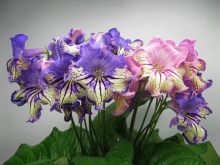
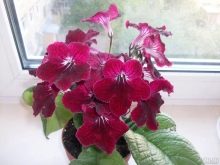

Types and popular varieties
Giving a characteristic to the varieties of streptocarpus, it is appropriate to start with “UA-Retro”. Judging by the gardeners' reviews, this flower does not have any special flaws and causes only positive emotions. 4 flowers can form on one peduncle.
"DS-King of Clubs" also gets positive marks. This variety is different:
- double flowers of high density;
- the neatness of the outlet;
- high quality peduncles;
- graceful dark color.
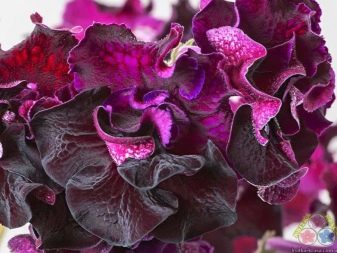
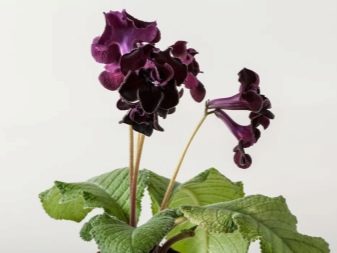
"UA-Canaryka" is an attractive streptocarpus with medium-sized flowers. The petals located below are painted in a bright yellow tone. At the top, they have a delicate lavender color.
A "DS-Horse" is a plant with large flowers... They include rich lemon yellow petals. The pinkish edge is slightly corrugated. The beauty of the variety is so great that it is difficult to convey it through photography. The reviews note that this color is unusual.
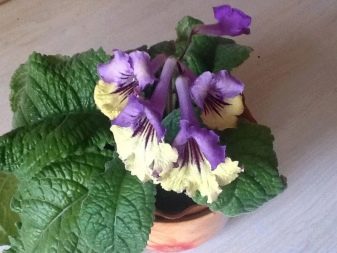
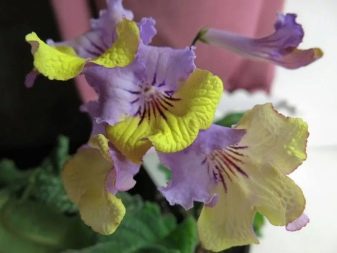
"Lola" is a Polish variety. The plant produces large white flowers.
A characteristic cultural feature, however, is the blue mesh. It adorns the lower petals and is also present at the edges of the upper petals. The neck is decorated with a black spot. "Lola" blooms for a long time. Even the relatively modest size of the plant as a whole does not interfere with the formation of large buds.
.
The flower's width (in the widest part) can reach 0.075 m. "Babies" are formed rapidly - not even 30 days will pass after planting the leaf. Judging by some reviews, "Lola" resembles an orchid
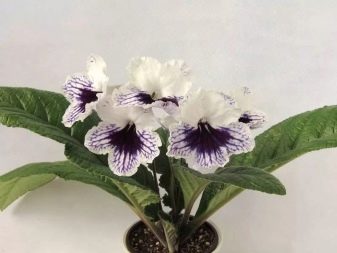
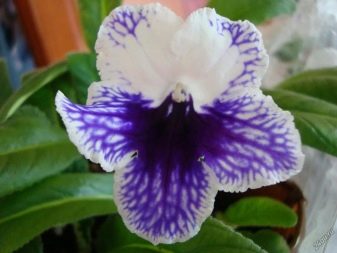
"DS-Cyanea" is slightly inferior to her in beauty, and this variety has also been tested by gardeners and is guaranteed to give good results. The large semi-double "wasp" has an expressive aroma. Its sheet is quite wide. It is recommended to form a bush into one outlet. Some growers say that "DS-Cyanea" looks like a forest violet in appearance.
At the same time, the petals are raised from above, as if from an acacia.

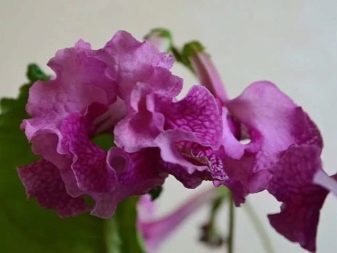
"Dem-Krizhalik" is a variety of semi-double flowers of white color. They reach great magnitude. A bluish mesh and a bluish border of the upper petals are characteristic. Deep purple lines are streaming from the neck.
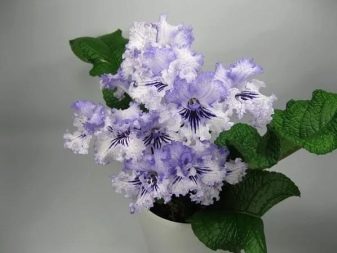
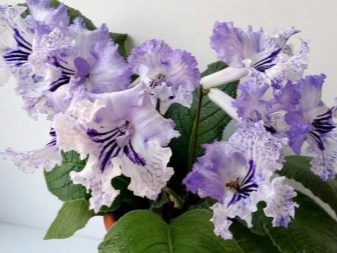
"DS-Women's Logic" is distinguished by exceptionally large flowers. Interestingly, they not only give a strong aroma, but can also change color. The usual color is orange, but raspberry-orange specimens are occasionally found.
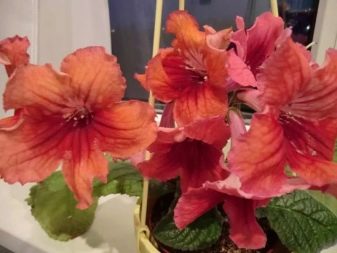

DS-Machaon is an elegant fantasy variety. The petals have a pink color of the petals at the very edge, and white prevails in the neck. The aroma of "DS-Machaon" is quite decent and will definitely delight people. The bush of this variety is loose, extensive, which will appeal to those who liked the varieties - new items of the last few years. The rosette is common for streptocarpus, as are elongated peduncles. The diameter of the flowers is 0.07-0.08 m.
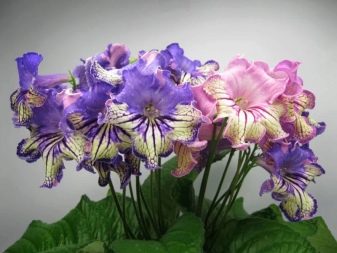
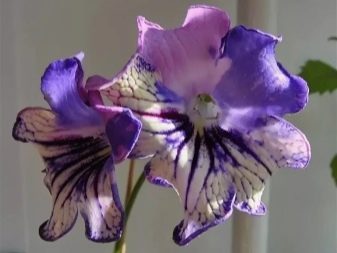
WAT-Arabesque also deserves attention. The plant was bred by the famous breeder Valkova and has large flowers. At VaT-Arabesque they are painted in a dark purple color. The petals are round. Short peduncles are very strong. The bush looks neat.
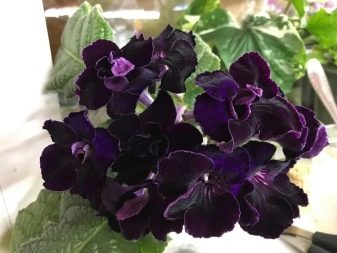

"DS-Typhoon" is popular among domestic gardeners. Gradually, the plant becomes similar in appearance to terry petunias. During the first flowering, the peduncle may not be strong enough. It is rather difficult for streptocarpus to keep it.
There is no need to be afraid - when the plant hardens, it will become more stable.
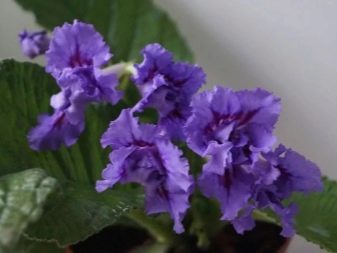
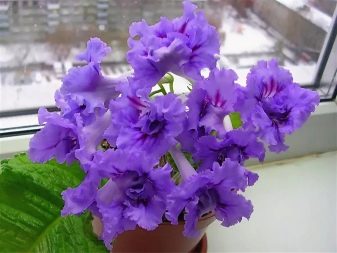
"DS-Sophie Ruletovna" Is a very dark streptocarpus with a large white neck.
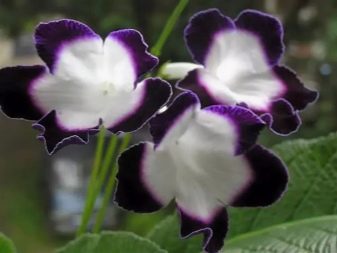
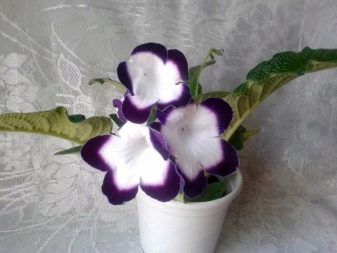
"Wendlanda" is by no means a demanding variety, as it might seem from its exotic name and appearance. The plant has a single (but very large) leaf. Its end is green and the base is painted in purple. "Wendland" has loose brushes, which gather purple flowers. The variety dies immediately after flowering.
It can be propagated exclusively by seeds.
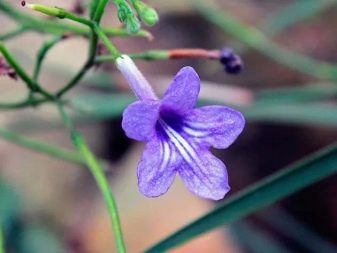
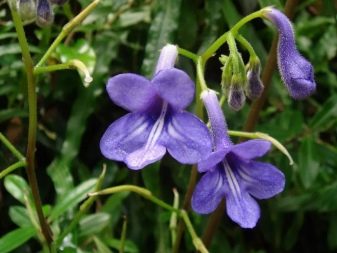
The stem-forming species of streptocarpus can grow up to 0.4-0.6 m. The apex of the rosette contains relatively small drooping inflorescences. They are characterized by a delicate blue color. The Kirk species is much smaller - his shoots reach a length of 0.1-0.15 m.The petals are painted almost completely in a lilac tone.
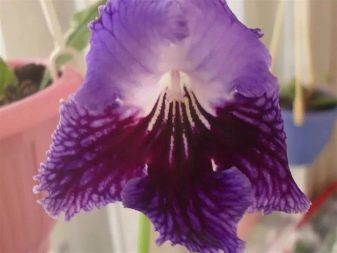
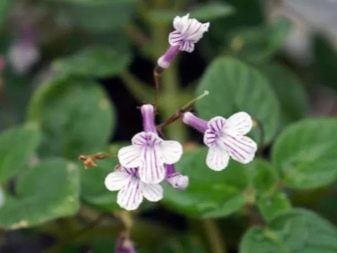
"Mozart" forms oblong, relatively persistent peduncles. This variety also has large oval leaf blades. They are painted in a dark green tone and have a wavy perimeter.The inflorescences reach large sizes, mainly of a purple hue. The top petals are completely smooth, while the lower ones have a pronounced texture.

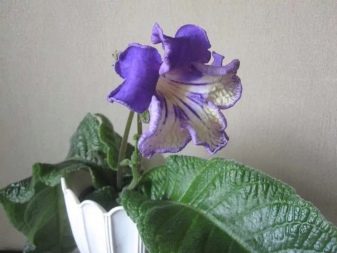
The "Black Swan" has very pronounced veins on the leaf blades. The flower itself is distinguished by a relatively modest and neat looking rosette. Peduncles are not too high, but they are durable. Large velvety inflorescences are painted in a dark purple tone. Flowering lasts 5-6 months (under favorable weather conditions).
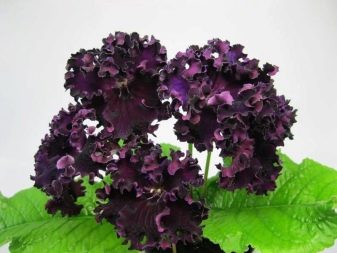
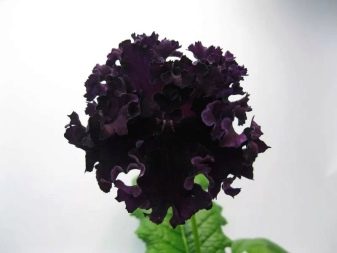
Fifa's peduncles are much longer, but thinner. The plant also has a modest-sized rosette. Significant inflorescences are decorated with fringes. This streptocarpus does not have a very strong odor. In addition, the foliage will not fall off for a long time.
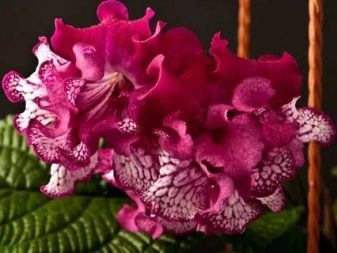

In "Pink Dreams", elliptical leaves of a dark green color are formed. Delicate pink inflorescences have a corrugated edge. On the lower petals, a crimson mesh is clearly visible.

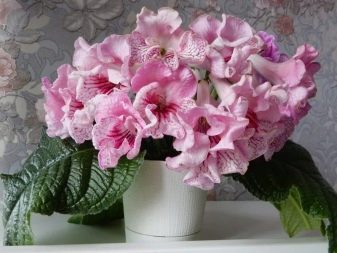
A streptocarpus "Sheik" gives medium-sized inflorescences of a terry type. They are painted in a dark burgundy color and are covered with small whitish spots. On elongated peduncles "Neck" appears from 1 to 3 flowers. Soft leaf plates are wide. The variety blooms from early spring to autumn.
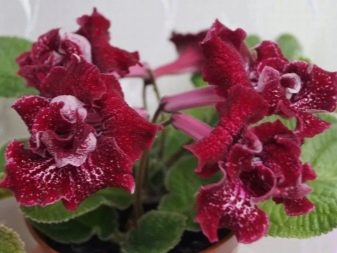
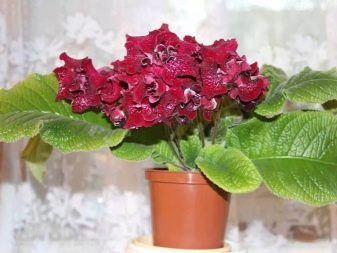
Streptocarpus "Crystal lace" has compact rosettes and green drooping leaf plates. On the edges of large inflorescences there are corrugated bluish stripes.


Variety "Omut" is distinguished by wide and moderately long leaf blades. They are colored pure green. Flowering continues from the first warm days until the end of autumn.
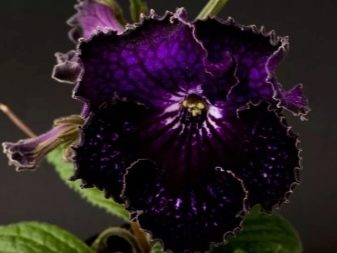
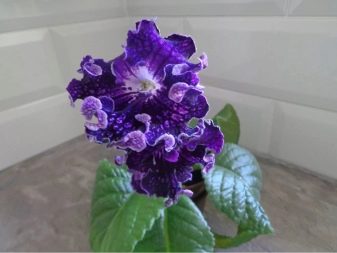
But for "Stribog", elastic peduncles of small height are characteristic. The dark green elliptical leaf blades are very attractive, as are the pale yellow inflorescences, the petals of which have a bluish perimeter.
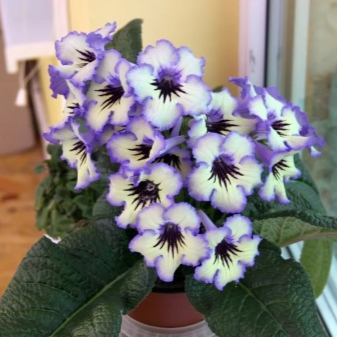

Variety "Hypnosis" forms peduncles of medium length. They come out of small leaf rosettes. The petals are uniquely colored (a combination of purple and black). In the middle, the flower is light, white rays come out from there. On long leaves, the edge seems to be covered with waves.
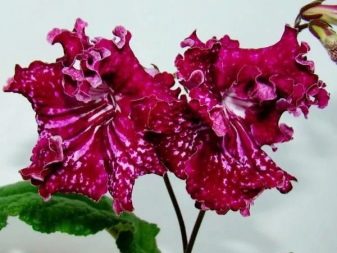

It is appropriate to complete the review on the UA-Wild Orchid variety, which is characterized by:
- large (0.08 and even 0.09 m) flowers;
- speckled with a vein-like pattern of flowers;
- lilac color;
- purple striped neck;
- slightly shorter peduncles than those of the Enchanted Forest.

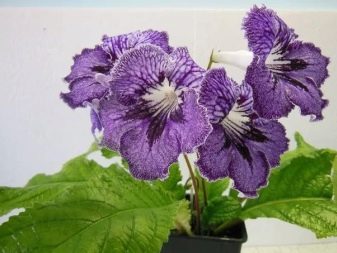
Landing
Growing streptocarpus and even propagating it is not difficult. The root complex of this plant is very strongly developed. Flowerpots, even quite large ones, fill up quickly. You only have to do a transplant every year. A newly purchased streptocarpus, if contained in a small vessel, must adapt to the new environment for 10-14 days.
Before transplanting into the main container, all peduncles must be disposed of, otherwise, the root system will not develop quickly enough. Attention should also be paid to the selection of landing tanks. Until the roots have mastered the entire space in the underground part of the pot, the plant will not develop on the surface.
The best crop pots are made of plastic. Another important requirement is a large width and a relatively low height.
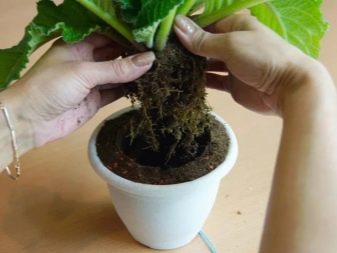
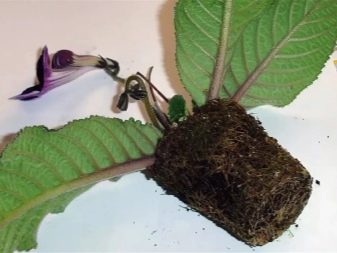
Streptocarpus has a mass of relatively thin roots. They can grow into the pores of clay vessels. Therefore, regular transplanting can damage the root system very seriously. You can not select high and not wide enough pots. Even if they are made of plastic, it will not be possible to guarantee uniform moisture throughout the entire layer.
If the soil dries up from above, it will still retain a fair amount of moisture at the bottom. None of the most careful selection of an irrigation scheme will certainly help - the root system will be subjected to both waterlogging and overdrying at the same time. When transplanting streptocarpus, each time a pot is selected 0.01-0.02 m wider than the previous vessel. Initially, the plant is planted in containers with a maximum diameter of 0.05-0.06 m.
When the culture grows up, it will need a reservoir of 0.06-0.08 m. Plants that have developed to an adult state should be in pots with a diameter of 0.12-0.14 m. It is unacceptable to use tanks with a diameter over 0.18 m. Excess moisture will be concentrated there. Very often this provokes root rot.
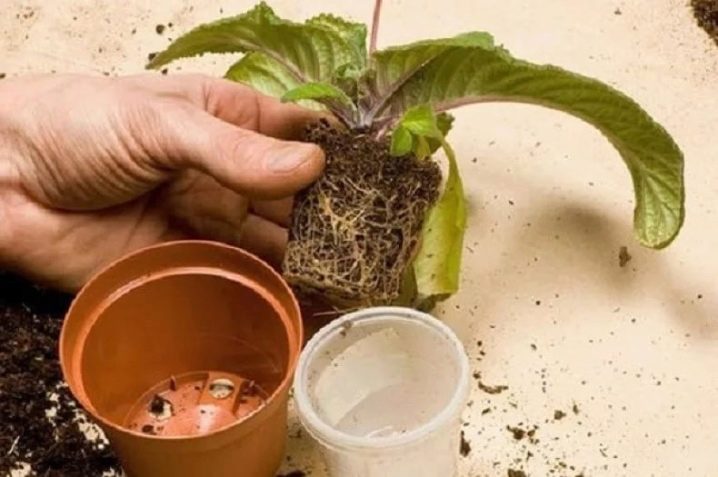
If you need to use streptocarpus for decorative purposes, many planting containers will not work. They are comfortable, but sometimes they look very undemanding. The way out can be the use of graceful pots.
It is better to plant "babies" of an African plant in transparent containers, for example, in disposable polyethylene cups.

Care rules
The soil for the streptocarpus flower should differ in three characteristics:
- looseness of the structure;
- excellent air permeability;
- saturation with nutrients.
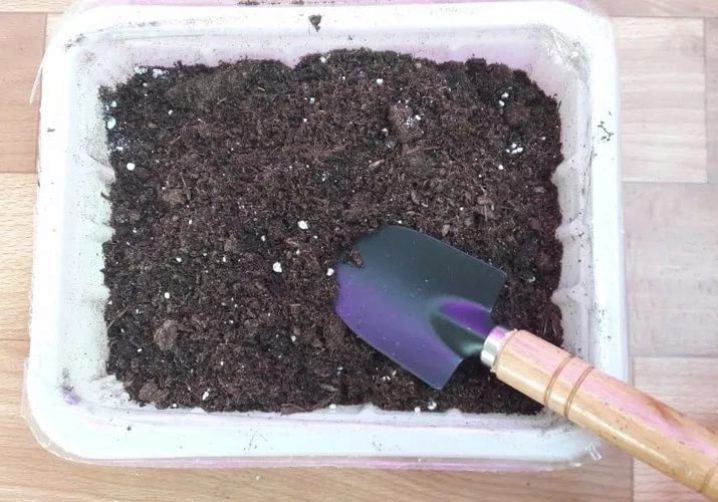
You can use store-bought soils designed for violets. It is advisable to mix such compositions with high-moor peat. Sometimes the substrate is prepared at home using:
- 2 parts of clay-sod soil;
- 1 part of high-moor peat;
- 1 part good humus;
- 1 part coarse river sand.
Some people advise mixing chopped charcoal into the potting mix. This component will prevent oversaturation of the earth with water. The soils used must be steamed in the oven.
A streptocarpus transplant, carried out in accordance with all the rules, will activate growth. Contrary to the recommendations of some sources, the method of transshipment of soil during transplantation is contraindicated.
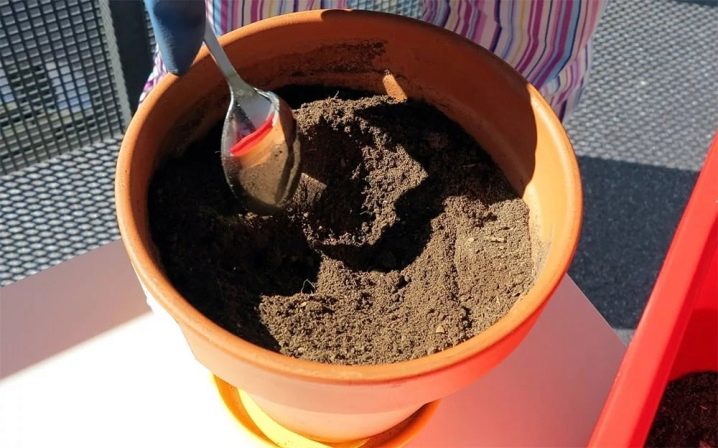
Streptocarpus very quickly "selects" nutrients. Therefore, it would be much more correct to change the old soil to a renewed substrate. Even minor damage to the roots will be compensated for by the plant without much harm. It fully adapts to such situations.
It is not too difficult to care for streptocarpus after transplantation. You just need to remember that the plant needs warmth. A pleasant temperature for him is 20-25 degrees. But at the same time, he is going through the heat very badly. In the cold season, when the flower is calm, the air temperature can be reduced to 14 degrees. The main thing is that it does not sink even lower.
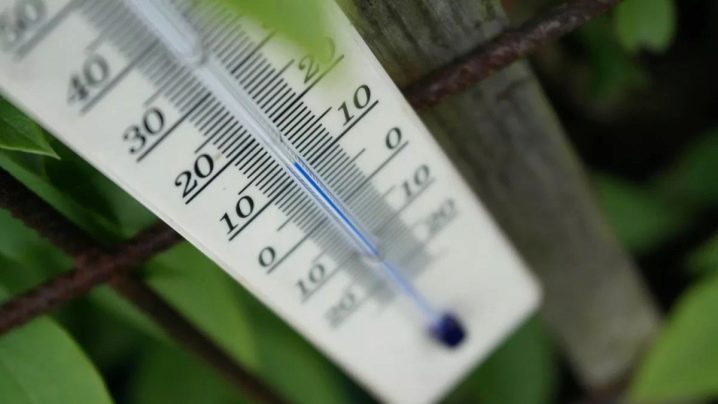
Streptocarpus does not tolerate drafts. Even in summer, window sashes should be covered at night. It should be borne in mind that for this culture, daylight hours from 12 to 14 hours are important. However, “whatever” light will not suit her: she only needs diffused lighting. In the summer months, containers with streptocarpus should be placed on windows facing west or east.
If it can only be placed on a south window, shading from direct sunlight will be required. If you have to put the plant away from windows, you will have to use phytolamps. Classic light bulbs are unusable, as are fluorescent lamps and LEDs.
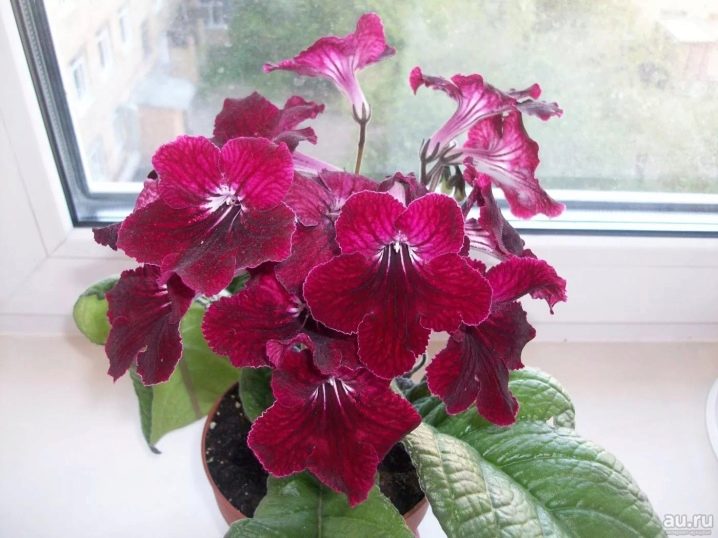
Problems with growing streptocarpus can be caused by illiterate irrigation. Untimely watering can lead to a temporary loss of foliage elasticity. Excessive moisture is much more dangerous: because of it, you can lose streptocarpus entirely. Since hybrids have few foliage, they evaporate a small amount of water. Watering should be done in moderation and only with settled water. You can irrigate the plant:
- pouring water into the pan;
- along the edges of the pots (excluding the ingress of liquid on the leaves);
- through a wick (this method is most effective).
Streptocarpus very badly survives contact with dry air.
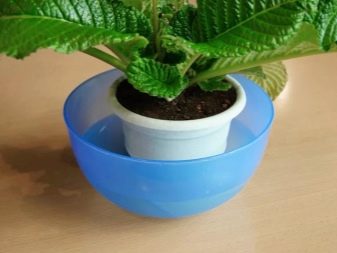
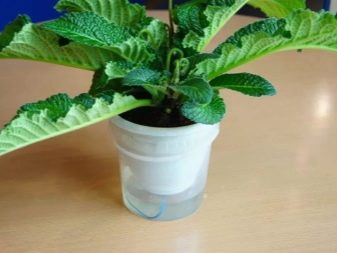
Spraying is carried out around it. At the same time, the plant itself is protected from moisture entering the leaf sinuses. Alternatively, they put vessels with water or wet expanded clay next to it. It is important for streptocarpus and good nutrition.
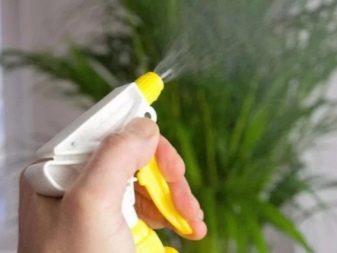
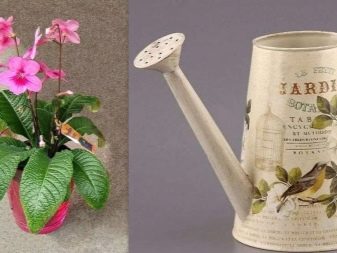
Without replenishment, the flower will hurt, and sometimes even wither away. For a plant to grow and develop fully, it needs potassium, nitrogen and phosphorus. Nitrogen mixtures should be applied immediately after rooting.The addition of such substances should be carried out every 6-7 days until the peduncles come out.
From branded formulations, Florist-growth is suitable. But this drug is only suitable for the first feeding. Then they use “Master”, “Flower Waltz”, “Kemiru-Lux”. It is undesirable to use any one mixture. It is recommended to alternate them. All formulations when feeding are used only in half doses (in relation to those indicated on the package or in the instructions).
Sugar is suitable from improvised means. 0.03 kg is diluted in water (0.5 l). This fertilizer is used monthly. Alternatively, 0.09 kg of wood ash diluted in 1 liter of water is added every 14 days. This mixture should be infused for 7-8 days. To help the streptocarpus tying the buds, use a castor oil solution (3%).

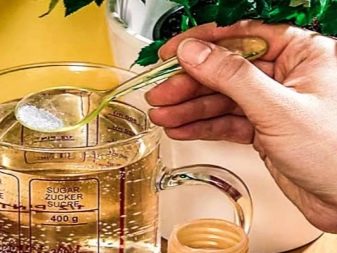
Top dressing in winter is not recommended. African culture slows down a little during the cold season. This is quite natural, and you cannot try to change the natural course of things. But backlighting against the background of a reduction in daylight hours is strictly required.
Streptocarpus growing on a backlit rack can bloom in any season. However, winter blooms are less abundant than during warmer months. If the plant does not bloom at all at this time, there is no reason to panic. It is quite possible that the matter is in the properties of a certain variety. It is recommended to study these properties in advance.
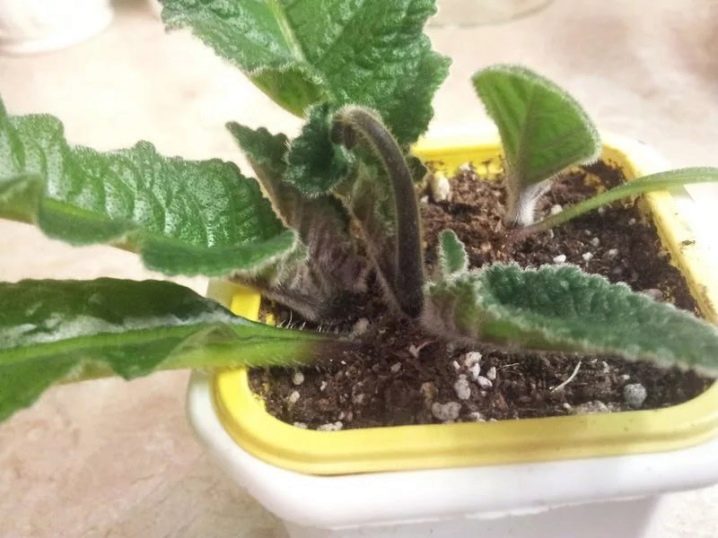
You should not abuse the backlight in the cold season either. Better to let streptocarpus gain strength and grow more actively next summer. It is impossible to achieve the formation of a strong streps bush if you allow it to tie the children in the fall. Sometimes only a single flower is left to define tonality and geometry. The other parts are cut off.
Normally, the growth of streptocarpus should begin in February. To speed up its onset, use enhanced backlight... This procedure is carried out only if the plant was not transplanted in the fall. As soon as flowering is completed, dried peduncles are immediately cut off. This must be done strictly with a sharp instrument; pulling or breaking off shoots is not recommended.
If flowering does not occur, it is necessary to adjust the streptocarpus keeping regime. To begin with, rearrange the pots to a more sunny place (without exposing the flower to direct sunlight), further reduce soil moisture and apply fertilizing with complex mineral mixtures. If a very small leaf appears near the leaf instead of peduncles, then it must be removed.
If possible, in summer, the temperature should be kept no more than 25 degrees. The best room for streptocarpus in the heat is the balcony. At the same time, the air humidity cannot exceed 70%. In a very dry room, you will need to use humidifiers.
Do not use hard water for irrigation. Pruning the African plant is not necessary, except for cleaning off dead parts.

Reproduction methods
Adult specimens of streptocarpus are often propagated by dividing the bush. To reduce stress on the plant, this procedure is combined with a transplant. They work as carefully as possible to reduce the risk of root damage. Having divided the bush into parts, they are planted in pots with a fresh mixture. Root necks should be covered with the same earth as they were buried before the procedure.
It will take several months to wait for flowering. In the absence of experience, it is best for gardeners to propagate streptocarpus by the sheet method. You only need a leaf with a saved stalk. It is kept in water at room temperature until roots appear. After their formation, the seedling is transferred to moist soil, where it is covered with a plastic bag on top.
If rooting of plate parts is chosen, the sheet is cut across. The cut points must be dried and covered with crushed charcoal. It is necessary to plant the workpiece directly into wet soil, inserting a part of the plate there at an angle of 45 degrees. It is very important to create greenhouse conditions for him.... For this, the sheet is covered with a film.
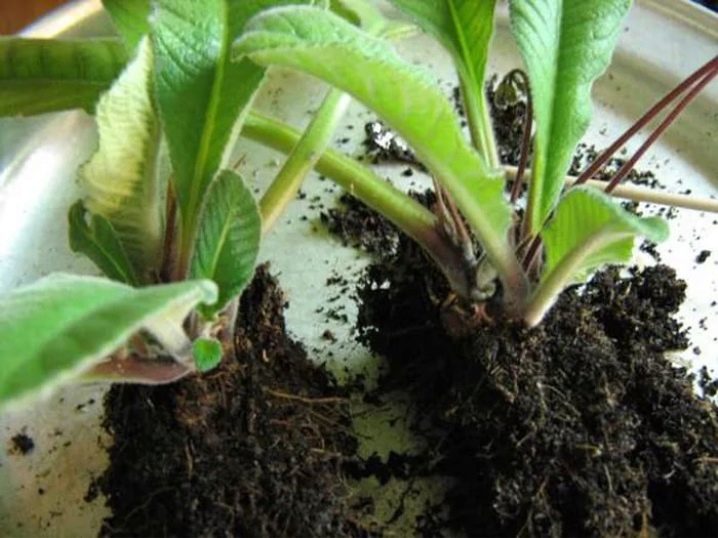
Another way is to dilute with pieces of leaves.... In this case, the plate is cut along the veins. The separated fragments are dried on sections, and additionally processed with crushed coal. Planting is done with a cut down into the soil. The seedling is deepened by 0.005 m. Children will appear in 2 months, and it will be possible to plant them in another 2 months.
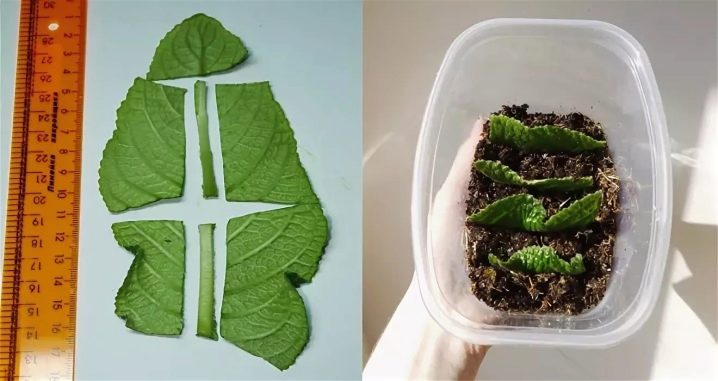
Seed propagation is practiced only by highly experienced growers and breeders. A serious drawback of this approach is the guaranteed loss of the basic properties of the variety. Seeds are germinated in a container of small height, where expanded clay is poured. Above it, there should also be a special soil for streptocarpus. It remains to uniformly lay out the seeds on the surface and spray it all from a spray bottle.
Next, you can cover the workpiece with a bag and germinate it in a warm corner. When shoots are found, the greenhouse must be systematically ventilated. The frequency of ventilation should be such as to exclude the ingress of condensation on the sprouts. You can remove the package only after 10 days. For irrigation, only a spray bottle is used, and they also carefully monitor that the air does not cool to more than 22 degrees.
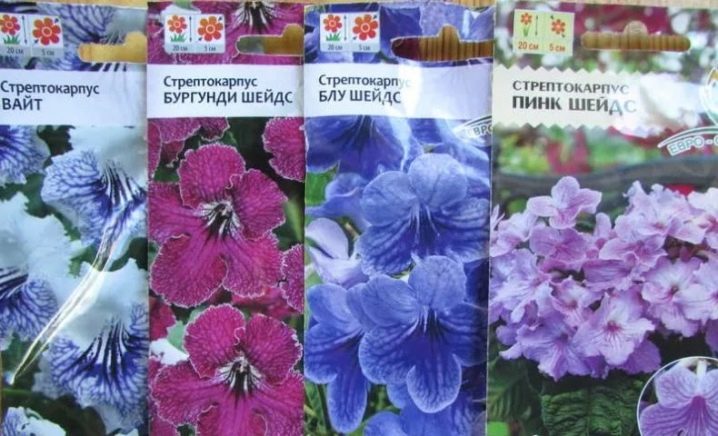
Diseases and pests
The bulk of streptocarpus diseases are caused by excessive moisture in the earth or viral attacks. You can fight powdery mildew or gray rot by replanting the plant and treating it with Fitoverm. But late blight and leaf mosaic are not cured at all. The only way to combat them is to completely destroy diseased plants. Of insects, the danger to culture is represented by:
- thrips;
- spider mites;
- scabbards;
- aphid.
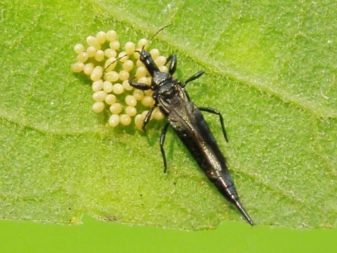
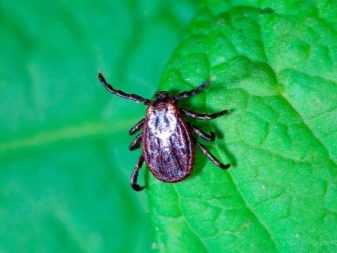
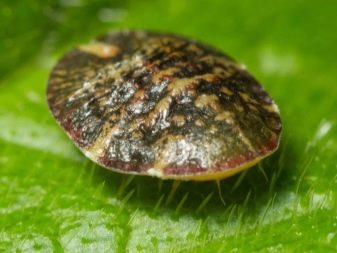

It helps to fight all these pests Actellik. Dilution of it before use should be done strictly according to the instructions. Almost all cases of infection can be prevented through proper agricultural technology.
But other difficulties may also arise. If the tips of the leaves dry out, excessively hot air is present. Usually, you can fix the problem by bringing the microclimate back to normal.
You should also take care of more active air humidification. The foliage turns yellow mainly due to a lack of fertilizers. The fight against this defect is carried out by weekly feeding.
Leaves can also wither - then it is imperative to activate watering. Slow growth is often triggered by:
- insufficient amount of fertilizers;
- poor soil quality;
- too small pots.
See below for streptocarpus care.



























The comment was sent successfully.